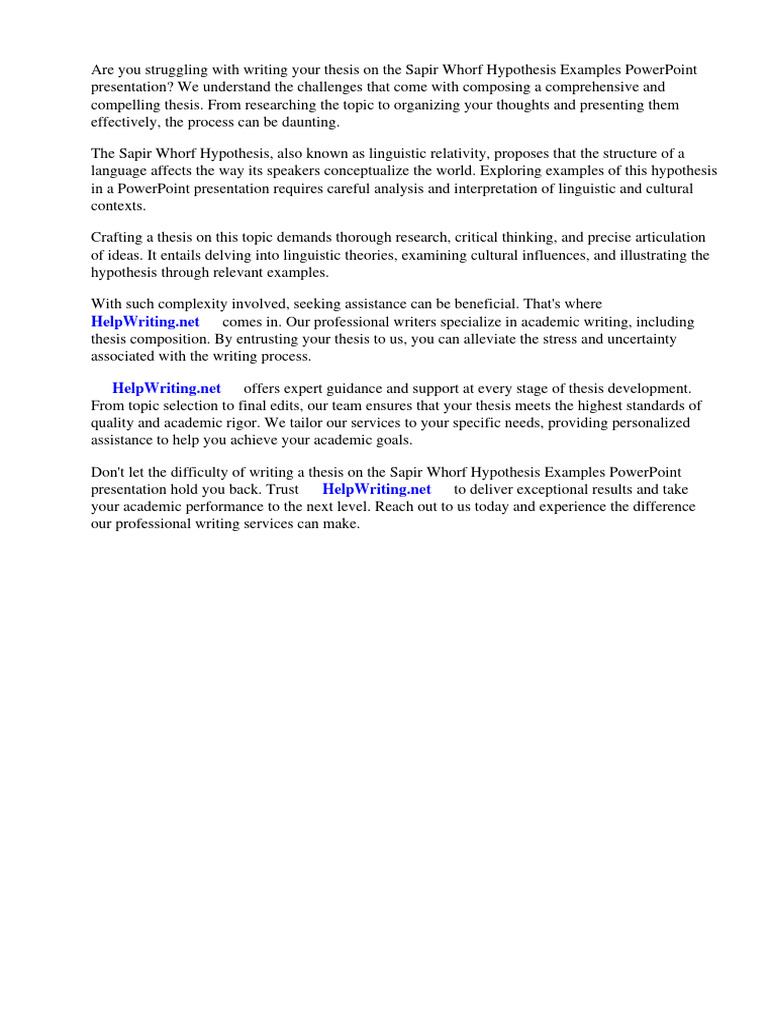The Sapir-Whorf Hypothesis, also known as linguistic relativity, posits that the structure and vocabulary of a language influence how its speakers conceptualize the world around them. This fascinating interplay between language and thought raises intriguing questions: can the words we use actually shape our perceptions? And, if so, how does this dynamic manifest in everyday experiences? Here, we will explore several common examples of the Sapir-Whorf Hypothesis that illustrate this profound connection.
One striking example comes from the realm of color perception. Different languages categorize colors in varied ways, which can lead to divergent experiences of color. For instance, in Russian, there are distinct terms for lighter blues (‘голубой’ or ‘goluboy’) and darker blues (‘синий’ or ‘siniy’). Research indicates that Russian speakers are quicker to identify shades of blue compared to English speakers, who use a single term to encompass a broader spectrum. This linguistic difference suggests that language not only names colors but may also modulate how individuals perceive and differentiate them. It poses an interesting challenge: if we introduced a new classification for color in English, would it alter our perception of hues altogether?
Consider also the Inuit languages, which have multiple words for snow, each describing a specific type or condition. For example, the word ‘qanik’ refers to falling snow, while ‘aput’ symbolizes snow on the ground. This nuanced lexical distinction provides Inuit speakers with a greater capacity to express and recognize the subtleties of their environment, underscoring the profound effect language can have on cognition. This leads one to ponder: if English had a more elaborate vocabulary for different types of precipitation, would we start to appreciate and interact with our climate in new, meaningful ways?
Time is another compelling facet through which the Sapir-Whorf Hypothesis can be examined. The Hopi language, spoken by a Native American tribe in Arizona, does not segment time into past, present, and future as many Indo-European languages do. Instead, Hopi speakers express time in terms of events and their relevance to the present. This linguistic structure offers a different worldview, potentially leading its speakers to perceive the flowing nature of time as more fluid and connected, rather than compartmentalized. Such a distinctive approach invites a thought-provoking question: could such a perspective foster a more harmonious relationship with our environment by encouraging a focus on present actions rather than future fears?
Another illustrative case is that of gendered languages, such as Spanish or German, where nouns are assigned a gender. This linguistic characteristic may carry implications for how speakers attribute qualities to objects and concepts. Research suggests that when asked to describe the same object, speakers of gendered languages may unconsciously ascribe attributes aligned with the object’s grammatical gender. For instance, a bridge may be perceived as elegant or beautiful in a feminine language while viewed as strong or sturdy in a masculine context. This fundamentally challenges our understanding of subjectivity: how much does language dictate our impressions of the world, and could this influence our intrinsic biases and societal norms?
In ecological discourse, the way we communicate about the environment can profoundly affect our relationship with it. Take, for example, the term ‘wilderness.’ In English, it evokes images of untamed nature, devoid of human presence. This framing may lead to a dichotomy where nature is seen as separate from humanity, fostering disconnection rather than stewardship. In contrast, many Indigenous languages encompass concepts that emphasize an interconnectedness with nature, facilitating a sense of responsibility and caretaking. This variance prompts a challenging question: how might rebranding our environmental terminology cultivate a more sustainable mindset and encourage active participation in conservation efforts?
Moreover, the vocabulary surrounding personal relationships also demonstrates the principles of the Sapir-Whorf Hypothesis. For instance, languages such as Tagalog in the Philippines employ specific terms to denote varying degrees of familial relationships, which may influence social dynamics and cultural expectations. The absence of such nuanced distinctions in English might lead to a more generalized and less emotionally rich understanding of relationships. Reflecting on this raises a tantalizing challenge: if we were to adopt a more intricate lexicon for social relationships, could it lead to deeper empathy and understanding within our communities?
Lastly, consider the impact of technology on language evolution. The advent of digital communication has birthed a plethora of neologisms and abbreviations, such as “BRB” (be right back) or “LOL” (laugh out loud). These linguistic innovations not only denote new behaviors but also subtly shift social interactions and perceptions of time and presence. The question arises: to what extent will linguistic changes foster new cultural norms, and how will they influence the ways we relate to one another amidst an ever-evolving digital landscape?
In conclusion, the Sapir-Whorf Hypothesis serves as a profound reminder of the intrinsic connection between language and perception. Through our exploration of various examples, from color categorization to time conceptualization, we uncover the nuanced ways in which language shapes our understanding of the world. As we continue to evolve linguistically, the challenge remains: how can we harness the power of language to cultivate a more compassionate, interconnected, and sustainable worldview? The possibilities are endless, inviting us to reflect on our own linguistic choices and their broader implications for humanity and the environment.
